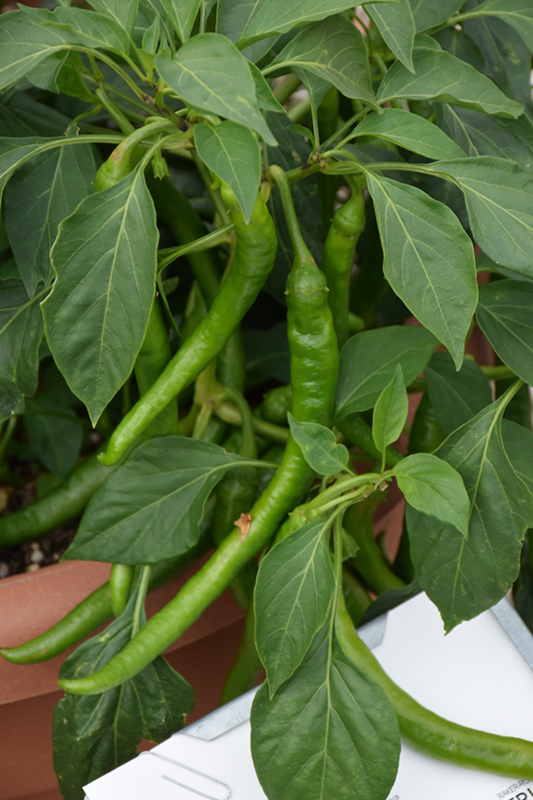Know Before You Go!
Get notified before our plants arrive in stores near you.
Plant Care Library
Height: 24 inches
Spacing: 18 inches
Sunlight:
![]()
Hardiness Zone: (annual)
Group/Class: Hot Cayenne
Description:
A great selection for versatility; performs well in gardens or containers; Long glossy green peppers emerge and mature to bright red; medium heat allows for many different culinary uses, such as, frying, drying and eating fresh in salads
Edible Qualities
Italian Longhorn Pepper is an annual vegetable plant that is commonly grown for its edible qualities, although it does have ornamental merits as well. It produces large green long peppers (which are technically 'berries') which can be harvested at any point. The fruit will often fade to red over time. The peppers have a spicy taste and a crunchy texture.
The peppers are most often used in the following ways:
- Fresh Eating
- Eating When Cooked/Prepared
- Cooking
- Drying
- Pickling
Planting & Growing
Italian Longhorn Pepper will grow to be about 24 inches tall at maturity, with a spread of 24 inches. When planted in rows, individual plants should be spaced approximately 18 inches apart. This vegetable plant is an annual, which means that it will grow for one season in your garden and then die after producing a crop.
This plant is quite ornamental as well as edible, and is as much at home in a landscape or flower garden as it is in a designated vegetable garden. It should only be grown in full sunlight. It does best in average to evenly moist conditions, but will not tolerate standing water. It is not particular as to soil pH, but grows best in rich soils. It is somewhat tolerant of urban pollution. This is a selected variety of a species not originally from North America, and it is considered by many to be an heirloom variety.
Italian Longhorn Pepper is a good choice for the vegetable garden, but it is also well-suited for use in outdoor pots and containers. With its upright habit of growth, it is best suited for use as a 'thriller' in the 'spiller-thriller-filler' container combination; plant it near the center of the pot, surrounded by smaller plants and those that spill over the edges. It is even sizeable enough that it can be grown alone in a suitable container. Note that when growing plants in outdoor containers and baskets, they may require more frequent waterings than they would in the yard or garden.
A NetPS Plant Finder tool

